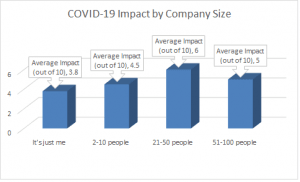Business or Hobby? How to Avoid the Dreaded IRS Hobby Classification
If your activity is classified as a hobby, any income generated is reported as “Other Income” on Schedule 1 (Form 1040). Unlike businesses, hobby expenses (other than the cost of goods sold) are not deductible. From collecting stamps and woodworking to crafting and quilting, people have all kinds of hobbies – and most of these hobbies will never turn a profit. For hobbies that do earn income, people should know that they must report it on their tax return. This content has been reviewed by an Enrolled Agent (EA) with the IRS — the highest credential awarded by the agency.
When applying the five-year safe harbor test, the testing period cannot start until year 2, the first profitable year. This means the safe harbor period is the five-year period for years 2-6. Also, the safe harbor only applies to years 5 and 6 because year 5 is the third year a profit was made in the activity, which means the loss in year 6 is covered under the safe harbor rules. The losses in years 1 and 3 are not covered so if this taxpayer is examined, the IRS would likely attempt to disallow the losses for both of those years under the hobby loss rules.
An experienced CPA can work with you to put all the necessary elements together to maintain business classification and enjoy the related tax benefits. The “test” period for the safe harbor does not begin to run until the first year an activity shows a profit. For example, suppose a taxpayer starts a new business and incurs losses in when the irs classifies your business as a hobby years 1, 3, and 6, while turning a profit in years 2, 4, and 5.
Small Business Taxes: Expert Advice for Filing Your Return
Continued work by the IRS is most common in cases where the profitable years showed marginal profit and the loss years contained much larger amounts. Beginning with the 2018 tax year, the Tax Cuts and Jobs Acteliminated the ability of hobbyists to deduct non-business expenses as miscellaneous expenses on Schedule A of Form 1040. It’s important to understand the difference between a business and a hobby because a legitimate business can deduct its expenses and possibly take a loss if it isn’t profitable. But if the IRS considers your activity as a hobby, you can’t deduct expenses to get a loss to offset other income. Under Internal Revenue Code (IRC) § 183, also known as the hobby loss rule, the IRS limits deductions for activities not engaged in for profit. Let a local tax expert matched to your unique situation get your taxes done 100% right with TurboTax Live Full Service.
Is Your Hobby Considered a Business by the IRS?
You’ll also be able to take advantage of more deduction and credit opportunities. The IRS distinguishes between legitimate businesses and hobby activities for the purpose of taxes. The agency considers a business as a for-profit entity and a hobby activity as a not-for-profit activity. According to the IRS, a legitimate business has a primary purpose of “income or profit” and is engaged in a profit- or income-seeking activity “with continuity and regularity.” The biggest difference between the two is that businesses operate to make a profit while hobbies are for pleasure or recreation.
There are a few other things people should consider when deciding whether their project is a hobby or business. Even if a taxpayer fails the safe harbor test for a few years, all is not lost. There are several additional steps a taxpayer can take to show they are running a business rather than engaging in a hobby. Work with your Preferred CFO team to help distinguish between hobby and non-hobby expense and income-related items.
Hobby vs. Business: How the IRS Classifies Your Activities and Why It Matters
Intuit reserves the right to modify or terminate any offer at any time for any reason in its sole discretion. Unless otherwise stated, each offer is not available in combination with any other TurboTax offers. Certain discount offers may not be valid for mobile in-app purchases and may be available only for a limited period of time. To keep your business in good standing, keep track of which deadlines apply to you. If any of these dates fall on a weekend or federal holiday, the applicable deadline is the following business day. If the underpaid tax exceeds 10% of the tax owed or $5,000, the IRS imposes a 20% penalty on the underpayment.
This form delays the IRS’s final decision until after your fifth year in business. If you have a really good year, you might have the money to make bigger purchases to grow your business. Other ways of proving your experience include consulting with other experts and learning the skills it takes to grow your business. To be considered a business, you don’t need to pass all — or even a majority — of these tests. But the ones you do pass will need to drive home to the IRS that you mean business. The current US tax system doesn’t allow you to write off anything you spend on pursuing your hobby.
- There are several different factors people should consider when making the determination and the IRS provides resources to help.
- If you’re paying business taxes for the first time, you might be surprised by the amount of tax you’re responsible for.
- There is no monetary gain—and no expectation of making a profit—from these pastimes.
- Profits from the sale of goods, including personal items, and services is taxable income that must be reported on tax returns.
- Being taxed on your hobby income without getting to write off your hobby expenses — that sounds like the worst of both worlds.
Adjusted gross income (AGI) is gross income on a tax return minus adjustment. When you file your business tax return for the year, the IRS may audit it if they have questions about its purpose (legitimate business or hobby). If the IRS determines that your activity is a not-for-profit (hobby) activity, you can’t take deductions from that income to offset other income to calculate your AGI. The Internal Revenue Service typically allows you to take a tax deduction for losses incurred in the operation of your business.
IRS Nine Factors Test
Enrolled Agents are empowered to represent all taxpayers before the IRS, on all types of tax-related matters. Accountants who earn this certification have passed a comprehensive three-part exam on individual and business tax returns. To maintain EA status, they must stay up to date in the field by completing 72 hours of continuing education every three years. Generally, the IRS classifies your business as a hobby, it won’t allow you to deduct any expenses or take any loss for it on your tax return.
Understanding the difference between a hobby and a business is crucial for tax purposes. While both can bring in income, the IRS distinguishes them based on your intent to make a profit. Regarding the list above, many of these elements can be controlled by the taxpayer in full or to an extent.
More Products from Intuit
All factors, facts, and circumstances with respect to the activity must be considered. If you have turned a profit in at least three of five consecutive years, the IRS typically will presume that you are engaged in it for profit. This may be extended to a profit in two of the prior seven years in the specific case of horse training, breeding, or racing. These are just some considerations that may, or may not, apply in determining if you have a business or a hobby in the eyes of the IRS.
- It’s also about recognizing why things aren’t working — and changing up your business to make it profitable.
- Any partner, shareholder, or sole proprietor who expects to owe at least $1,000 in taxes usually has to pay quarterly estimated taxes.
- The Internal Revenue Service typically allows you to take a tax deduction for losses incurred in the operation of your business.
- If taxpayers aren’t trying to make a profit with their hobby, business or investment activity, they can’t use a loss from the activity to offset other income.
- Each person should consult their own attorney, business advisor, or tax advisor with respect to matters referenced in this post and their personal situation.
Whether taxpayers have a hobby or run a business, good recordkeeping is always key when it’s time to file taxes. To help simplify things, the IRS has established factors taxpayers must consider when determining whether their activity is a business or hobby. Beginning in 2018 and lasting through 2025, miscellaneous itemized deductions are no longer deductible and therefore no hobby expense is able to reduce hobby income. If you use personal property like equipment and machinery for business purposes, you may have to report and pay personal property taxes. Note that if the IRS recognizes your business as a hobby, then you can’t deduct expenses.
If this does happen to someone, it’ll likely be after an audit triggered for some other reason. That’s why its standard for “trying to make a profit” doesn’t just mean bringing in income. It’s also about recognizing why things aren’t working — and changing up your business to make it profitable.
If you’re paying business taxes for the first time, you might be surprised by the amount of tax you’re responsible for. Fortunately, you can deduct business expenses and claim credits to offset taxation on businesses and lower your overall tax bill. If you’re filing taxes for a partnership, each partner has to report their share of profits and losses on their individual tax return. You have to file Form 1065 in addition to your 1040, but you don’t have to pay income taxes as a business. The hobby loss rules contain many pitfalls for the unwary taxpayer, and the changes the in rules have tilted the playing field in favor of the IRS. With a solid business plan, good records, and time and expertise spent in the activity, you can work to combat a hobby assessment and work to classify your activity as a business.











شبکههای اجتماعی ایران اروپا